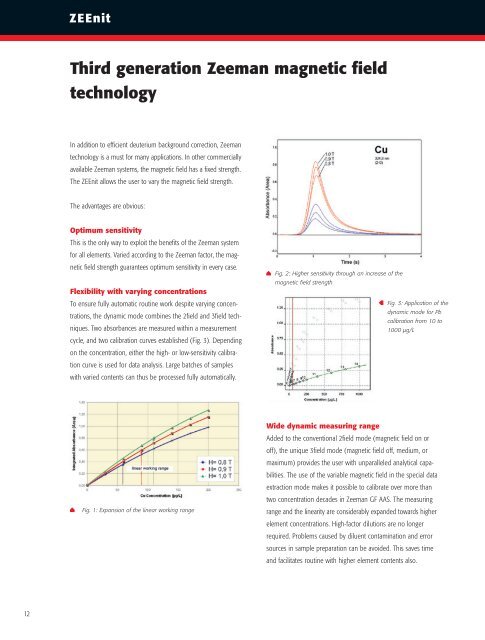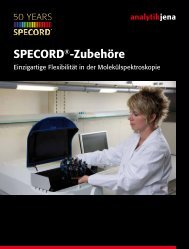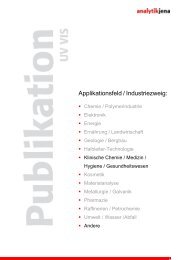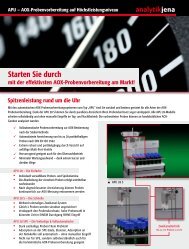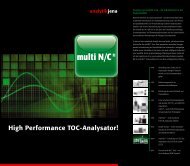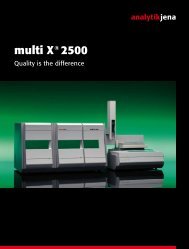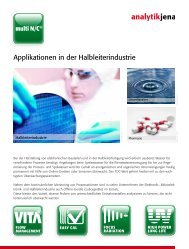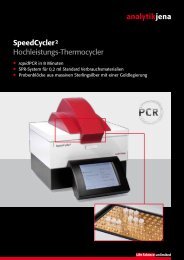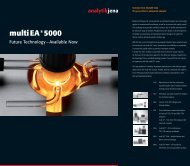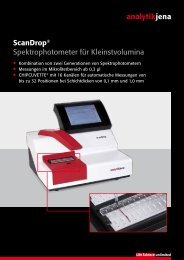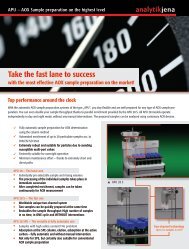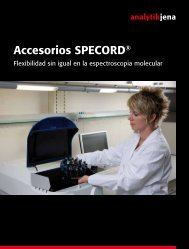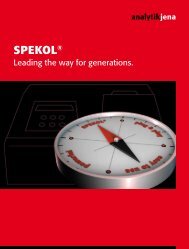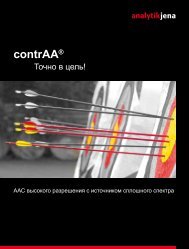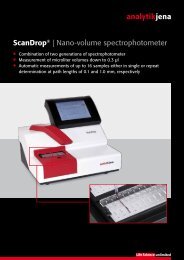Create successful ePaper yourself
Turn your PDF publications into a flip-book with our unique Google optimized e-Paper software.
12<br />
ZEEnit<br />
Third generation Zeeman magnetic field<br />
technology<br />
In addition to efficient deuterium background correction, Zeeman<br />
technology is a must for many applications. In other commercially<br />
available Zeeman systems, the magnetic field has a fixed strength.<br />
The ZEEnit allows the user to vary the magnetic field strength.<br />
The advantages are obvious:<br />
Optimum sensitivity<br />
This is the only way to exploit the benefits of the Zeeman system<br />
for all elements. Varied according to the Zeeman factor, the mag-<br />
netic field strength guarantees optimum sensitivity in every case.<br />
Flexibility with varying concentrations<br />
To ensure fully automatic routine work despite varying concen-<br />
trations, the dynamic mode combines the 2field and 3field tech-<br />
niques. Two absorbances are measured within a measurement<br />
cycle, and two calibration curves established (Fig. 3). Depending<br />
on the concentration, either the high- or low-sensitivity calibra-<br />
tion curve is used for data analysis. Large batches of samples<br />
with varied contents can thus be processed fully automatically.<br />
Fig. 1: Expansion of the linear working range<br />
Fig. 2: Higher sensitivity through an increase of the<br />
magnetic field strength<br />
Wide dynamic measuring range<br />
Added to the conventional 2field mode (magnetic field on or<br />
off), the unique 3field mode (magnetic field off, medium, or<br />
maximum) provides the user with unparalleled analytical capa-<br />
bilities. The use of the variable magnetic field in the special data<br />
extraction mode makes it possible to calibrate over more than<br />
two concentration decades in Zeeman GF AAS. The measuring<br />
range and the linearity are considerably expanded towards higher<br />
element concentrations. High-factor dilutions are no longer<br />
required. Problems caused by diluent contamination and error<br />
sources in sample preparation can be avoided. This saves time<br />
and facilitates routine with higher element contents also.<br />
Fig. 3: Application of the<br />
dynamic mode for Pb<br />
calibration from 10 to<br />
1000 µg/L


